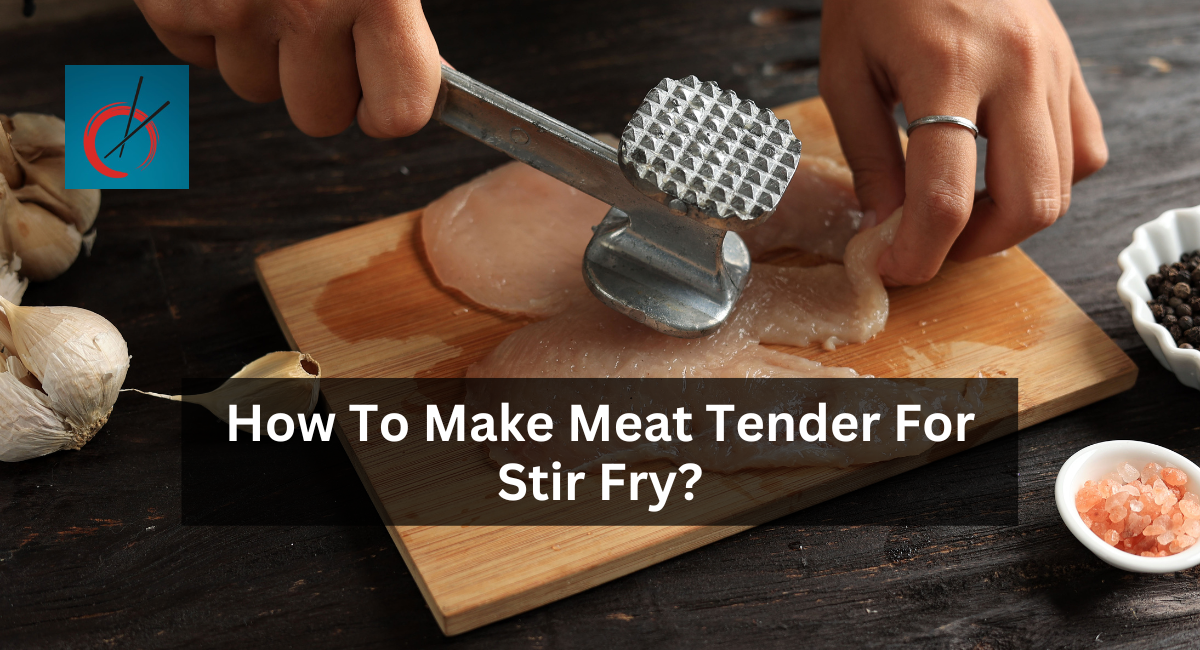Obtaining tender, melt-in-your-mouth flesh is essential for preparing a delectable stir-fry. Whether designing a stir-fry with beef, poultry, pork, or another protein, mastering the art of tenderizing meat is necessary. This article, will explain how to make meat tender for stir fry.
What Is The Best Cut Of Beef For Stir-Frying?
By a wide margin, flank sirloin is the most popular cut of meat Chinese restaurants use in all stir-fry dishes. It is also the most recommended beef cut in stir-fry recipes.
The flank sirloin is flavorful, reasonably priced, and widely accessible. With its intense beef flavor, all you need to do to make a delicious stir-fry is correctly slice and marinate the beef.
How To Make Meat Tender For Stir Fry?
1. Choose The Right Cut
Starting with a tender cut of meat is an excellent method to guarantee a tender stir-fry. Some cuts of flesh are more tender than others by nature. Consider utilizing sirloin, ribeye, and tenderloin for beef.
When working with poultry, boneless, skinless chicken breasts or thighs are typically more tender than their bone-in counterparts.
Even though these cuts are naturally tender, it is essential to use the appropriate techniques to preserve their tenderness.
2. Marinating
In addition to adding taste, marinating meat makes it more tender. The meat’s muscle fibers break down faster when an acidic marinade like vinegar, orange juice, or yogurt is used.
In addition, the herbs and spices in the marinating give the meat flavor. For the best results, marinate the meat for at least 30 minutes.
If you’re using harder slices, marinate the meat in the fridge overnight.
3. Slicing Thinly
Thinly slicing meat is necessary to ensure that it cooks rapidly and stays tender. Contrary to the direction of the muscle fibers, the flesh should be sliced against the grain.
Against-the-grain slicing shortens the meat’s fibers, making it simpler to chew.
4. Velveting
As part of the Chinese cooking process called “velveting,” cornstarch, egg whites, and sometimes a little oil are used to coat the meat.
By creating a barrier around the meat, this coating keeps it from getting too done and keeps it soft.
The meat can be boiled in hot water for a short time after velveting before being stir-fried. This method works especially well for stir-frying chicken and beef.
5. Tenderizing Tools
A meat mallet or meat tenderizer may be used on tougher portions of meat, such as flank steak.
To prevent a mess, place the meat between plastic wrap or in a plastic bag and pound it gingerly until it is uniformly thin.
This technique physically breaks down the muscle fibers and tenderizes the meat.
6. Baking Soda
A small amount of baking soda added to the marinade can help tenderize the meat. The pH of the surface of the meat is increased by baking soda, making it more alkaline and tenderizing the exterior layers.
Be careful with the amount, as too much baking soda can cause the flesh to become mushy and alter its flavor.
7. Papaya Or Pineapple Enzymes
Papaya and pineapple both contain meat-tenderizing enzymes, papain and bromelain, respectively.
Fresh puree or juice from these fruits may momentarily marinate your meat. These enzymes work rapidly; therefore, only marinate the meat for a short time, or it will become excessively tender and even mushy.
8. Cook Quickly
Meat can become tough if overcooked, so stir-fry it rapidly over high heat. The high heat serves to sear and seal the meat’s juices.
Before adding the vegetables, add the meat to the heated wok or pan and cook for only a few minutes until it is no longer pink in the center.
Shortcut To Tenderizing Beef At Home
If the above description of how restaurants tenderize beef seems cumbersome, you can still tenderize beef using a shortcut.
- Baking soda is a potent tenderizer, but if applied in excess, it can impart an unpleasant flavor to the beef, which is why it is rinsed away.
- The solution is to use less baking soda and to marinate the meat for longer.
- Add 1/8 to 1/4 teaspoon of baking soda and 2 to 3 tablespoons of water per pound of beef, depending on the cut’s firm.
- Mix and incorporate it into the meat before marinating. This is also an excellent tendeIncrease the beef’s marinating duration by at least 15 minutes.
- Additionally, adding water to the beef is a matter of personal preference. For certain stir-fry dishes, both hydrated and desiccated beef have advantages.
How To Marinate Beef For Stir-Fry
Marinating the beef for your stir-fry is an essential phase in the velveting process that should always be considered. As you may be accustomed, the marinade does not involve marinating the beef in a lot of liquid or adding a variety of flavorings.
It involves providing the beef a more succulent texture. Have you ever attempted to make stir-fry at home, but the meat turned out dried, unlike what you’ve had in Asian restaurants?
Mastering this marinating technique will allow you to prepare Chinese stir-fry dishes successfully at home.
The ability to tenderize meat for stir-fry will elevate your Asian-inspired home cooking to restaurant-quality standards. By selecting your cuts carefully, utilizing marination, and contemplating techniques such as velveting, you can ensure that your meat remains tender and succulent.
Read More:

